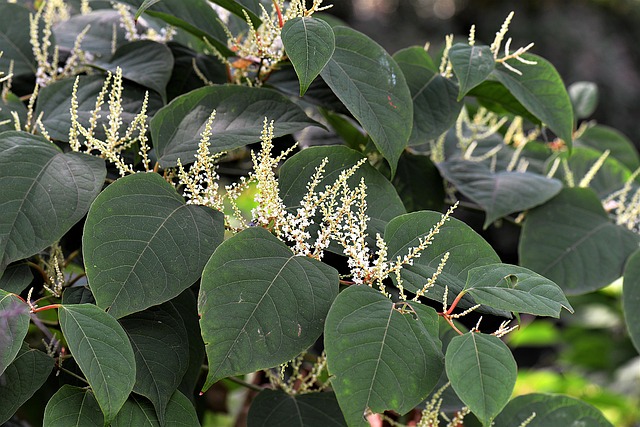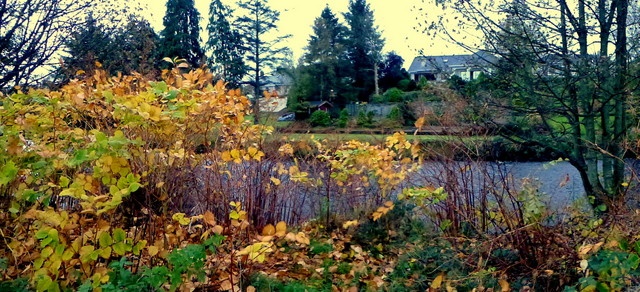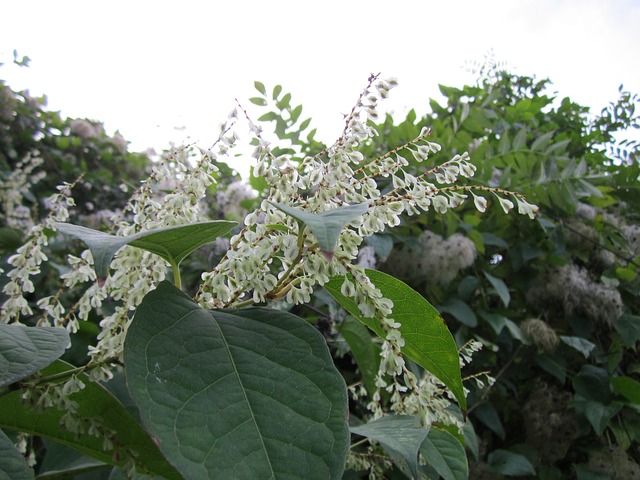Here in the UK, we have a long list of non-native invasive plant species that cause a myriad of problems. In some parts of the UK, planting, importing, selling or allowing certain invasive species to grow is punishable by up to two years in prison, so it's important that you know your natives from your non-natives before you start planting your flower bed.
When you come across a new plant in your garden, it can be difficult to know if it's an invasive species and (if it is) what you should do about it. Today we're going to take a closer look at some of the most common invasive weeds in the UK to find out a little more about them. Hopefully, this guide will help you identify and eradicate invasive weeds on your property before they have time to do any damage!

Japanese Knotweed (Fallopia Japonica)
Of course, at the top of our list had to be Japanese knotweed. Noted as one of the most widespread and destructive invasive plant species in the UK, Japanese knotweed can find its way into your garden and cause damage to your home in a matter of a few weeks.
More...
Have you spotted Japanese knotweed on your property and are worried you may be breaking the law by doing so? Well, don't worry, because it IS NOT a criminal offence to have Japanese knotweed on your property.

More...
During the autumn months, the majority of weeds and plants begin to die out and wilt with Japanese knotweed being no different. If you believe you have an infestation of knotweed on or near your property but are unsure and need confirmation, read on some tips on how to correctly identify Japanese knotweed in the autumn months.

Photo by Kenneth Allen
Identifying Japanese knotweed in the autumn
When trying to identify Japanese knotweed in autumn, there are a few things you should be on the lookout for:
- A very dense cluster of bamboo stems with a lot of foliage
- Plants that are approximately 2-3 meters high
- Leaves that are starting to turn yellow and are wilting
- Hollow bamboo-like stems that are beginning to turn from a reddish-brown into a darker shade of brown
- Leaves will contain a distinctive zigzag pattern on the stems
- The leaves will also have a distinctive heart-shape with a pointed tip and straightened edge
- During late autumn the canes will begin to die off and the plant becomes dormant
During the autumn months, Japanese knotweed will look similar to that in late summer, so shouldn't be too hard to identify. During these months, however, Japanese knotweed begins to flower where nearly all of the plant's resources are transferred to its rhizomes, causing it to grow significantly. This presents the optimal time to treat and reduce further rhizome growth.
Japanese knotweed treatment in autumn
If you're interested in how we work to treat Japanese knotweed during the autumn, take a look at our handy infographic below!

Do you require more information on Japanese knotweed during the autumn? Please feel free to get in touch with the Total Weed Control team today by filling out the form below - we'd be more than happy to help you out!

Japanese knotweed cropping up anywhere, especially near your home, can be a real cause for concern. If you spot Japanese knotweed on council or housing association land near your home, you need to make sure you report it as soon as possible.
We're sure you already know how quickly Japanese knotweed can spread, and it could show up on your land in only a few weeks if it's left unchecked! Ok, let's not panic too much. Here are the steps you should take to report Japanese knotweed on council or housing association land.
Head to your local council's website
The first thing you should do is check out your local council's website. Some council websites have a section dedicated to Japanese knotweed, and you should be able to report the problem there. Failing that, you should be able to find their contact details so you can tell them about the Japanese knotweed over the phone or via email.
What if the knotweed has spread to my property?
If Japanese knotweed is growing on your own property, it may be wise to contact an invasive weed expert before the problem gets any worse. Here at Total Weed Control, we offer a professional Japanese knotweed treatment service to help you get this plant under control.
Our experienced Japanese knotweed specialists can help homeowners to work with local councils and housing associations to get the plant treated to everybody's satisfaction. Get in touch with us to arrange a visit.
Request a Free Survey >
What Japanese knotweed laws are councils and housing associations required to follow?
Any organisation, whether it's a local council or a housing association, are subject to the same Japanese knotweed laws. These laws state that allowing knotweed to spread from your land to someone else is illegal and can be prosecuted as a private nuisance.
If you've spotted Japanese knotweed on council land, get in touch with the council, then get in touch with us! We can help you get the problem under control quickly. If you have any questions, don't hesitate to contact Total Weed Control.

SHORT ANSWER: To kill Japanese knotweed, we recommend a three-year herbicide programme, followed by a two-year monitoring period to make sure it doesn't come back. However, we also offer excavation and removal if you need quick results.
Like old habits and Bruce Willis, Japanese knotweed dies hard. This invasive plant species is tough and versatile - it can grow in all sorts of different environments, and it's very difficult to destroy. Just when you think you've gotten rid of it once and for all, spring arrives, and those purple shoots emerge from the ground yet again.
More...
